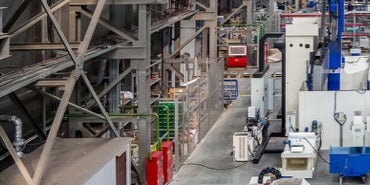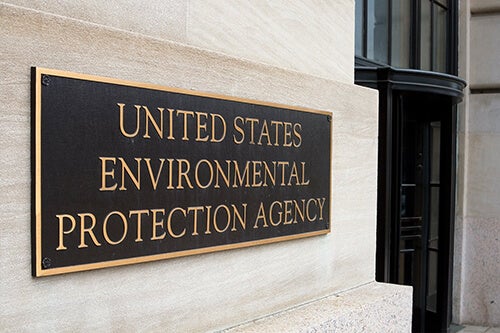What You Need to Know Right Now
On January 13, 2025, the European Commission published draft delegated directives to revoke and renew key Restriction of Hazardous Substances (RoHS) exemptions for the use of lead in the following applications (from exemption pack 22):
- Lead as an alloying element in steel, aluminum, and copper: 6(a), 6(a)-I, 6(b), 6(b)-I, 6(b)-II, 6(c)
- Lead in high-melting temperature solder: 7(a)
- Lead in glass or ceramic: 6(a), 6(a)-I, 6(b), 6(b)-I, 6(b)-II, 6(c)
These delegated directives are now open for public consultation. The deadline for responses is February 10, 2025, four weeks after publication. During this period, industry can comment on the proposed expiry dates and proposed split of exemptions into subexemptions.
Any company that places electrical and electronic products or parts on the European Economic Area (EEA) market, or sells them to companies that sell into the EEA, should immediately assess whether they use any of the affected exemptions, if lead is in any parts they use, and if they will need to continue using those exemptions in the future. Time is extremely limited to apply for the renewal of necessary exemptions, or to identify and source lead-free parts.
These RoHS exemption updates will have a widespread impact on global manufacturing supply chains, and the proposed regulatory timeline is significantly shorter than expected.
Let’s dig deeper into the proposed changes.
Drafted RoHS Exemption Expirations & Revocations
The latest round of proposed RoHS regulatory updates has taken compliance professionals by surprise, with very short validity periods compared to the norm.
Exemptions that are intended to be revoked, with a phase-out period of 12–18 months:
- 6(a) (Lead as an alloying element in steel for machining purposes and in galvanized steel containing up to 0.35% lead by weight)
- 6(b) (Lead as an alloying element in aluminum containing up to 0.4% lead by weight)
- 6(b)-I (Lead as an alloying element in aluminum containing up to 0.4% lead by weight, provided it stems from lead-bearing aluminum scrap recycling) (for equipment categories 1–7 and 10)
- 6(b)-II (Lead as an alloying element in aluminum for machining purposes with a lead content up to 0.4% by weight) (for equipment categories 1–7 and 10)
Exemptions proposed to expire on December 31, 2026:
- 6(a)-I (Lead as an alloying element in steel for machining purposes containing up to 0.35% lead by weight)
- 6(a)-II (Lead as an alloying element in batch hot-dip galvanized steel components containing up to 0.2% lead by weight)
- 6(b)-I (Lead as an alloying element in aluminum containing up to 0.4% lead by weight, provided it stems from lead-bearing aluminum scrap recycling) (for equipment categories 9 IMCI and 11 only)
- 6(b)-II (Lead as an alloying element in aluminum for machining purposes with a lead content up to 0.4% by weight) (for equipment categories 9 IMCI and 11 only)
- 6(b)-III (Lead as an alloying element in aluminum casting alloys containing up to 0.3% lead by weight, provided it stems from lead-bearing aluminum scrap recycling) (new exemption)
- 6(c) (Copper alloy containing up to 4% lead by weight)
- 7(a) (Lead in high-melting-temperature type solders, i.e., lead-based alloys containing 85% by weight or more lead)
- 7(c)-I (Electrical and electronic components containing lead in a glass or ceramic other than dielectric ceramic in capacitors, e.g., piezoelectronic devices, or in a glass or ceramic matrix compound)
Exemptions proposed to expire on December 31, 2027:
- 7(a)-I to 7(a)-VII (Very specific applications of lead in high-melting-temperature type solders, i.e., lead-based alloys containing 85% by weight or more lead, for forming stable electrical connections (new exemptions)
- 7(c)-II (Lead in dielectric ceramic in capacitors for a rated voltage of 125 V AC or 250 V DC or higher, excluding applications covered by point 7[c]-I or 7[c]-IV)
- 7(c)-V (Electrical and electronic components containing lead in a glass or glass matrix compound that fulfills five very specific functions) (new exemption)
- 7(c)-VI (Electrical and electronic components containing lead in a ceramic that fulfills any of the following functions [excluding items covered by points 7(c)-II, 7(c)-III and 7(c)-IV of this Annex as well as point 14 of Annex IV]:
- 1) For use in piezoelectric lead zirconium titanate [PZT] ceramics
- 2) For providing ceramics with a positive temperature coefficient [PTC]) (new exemption)
Your RoHS Compliance Action Plan:
Urgent action is required if you are affected by any of the above drafted changes.
- Identify which of the above-listed exemptions are used by your organization and within your supply chain.
- Evaluate internally if you still need an exemption by identifying whether there are feasible, lead-free alternative parts available. You will need to engage your suppliers and gain transparency into which substances are in their parts.
- If exemptions are still required, we recommend contacting your trade association and joining any working groups that can coordinate the reapplication of the exemption(s). Keep in mind that applications for the exemptions expiring on December 31, 2026, need to be submitted to the European Commission by June 30, 2025 (18 months before), less than six months away.
This process should be taken seriously. If you rely on an affected exemption, and it expires because a renewal was not applied for, or the renewal application was not robust enough, you will no longer be able to sell any products containing lead in that application into the EEA.
RoHS Exemption Management With Assent
Assent’s RoHS solution helps you proactively address upcoming RoHS exemption expirations and track which exemptions are used in your supply chain. We automate the collection of product compliance and parts information from your suppliers, giving you the transparency needed to quickly identify your risk exposure to proposed RoHS regulatory changes.
In addition, our team of regulatory experts carefully monitors the regulatory landscape and the European Commission’s publications to make sure you’re in the know about potential updates. We even have membership in some industry associations so we can help industry respond and shape the future of product compliance requirements.
To learn more about RoHS compliance, and how Assent partners with companies like yours to reduce their supply chain risk, check out our online RoHS resources.
Lead RoHS Exemptions FAQ
What are the key changes proposed by the European Commission regarding RoHS lead exemptions in January 2025?
The European Commission has published draft delegated directives to revoke and renew key RoHS lead exemptions, including those for lead as an alloying element in steel, aluminum, and copper lead in high melting temperature solder, and lead in glass or ceramics. Some exemptions are proposed for revocation with a phase-out period of 12–18 months, while others will expire on December 31, 2026, or December 31, 2027. These changes could significantly impact global manufacturing supply chains.
Who is affected by these changes?
Any company placing electrical and electronic products, or their parts, on the market in the European Economic Area (EEA). Affected organizations, including suppliers, need to determine if lead is present in their products or parts and whether they will continue to need these exemptions. Time is limited to transition to lead-free parts or apply for the renewal of necessary exemptions.
What actions should companies take to comply with these new regulations?
- Identify which exemptions are used in your supply chain
- Collaborate with suppliers to gain transparency into substances in parts
- Evaluate whether it’s feasible to transition to lead-free alternatives
- Join trade associations or working groups to coordinate exemption reapplications, especially for those expiring on December 31, 2026. Applications for these must be submitted by June 30, 2025
Who is responsible for ensuring compliance with the EU RoHS Directive?
Compliance is the responsibility of manufacturers and importers of electrical and electronic equipment (EEE) into the EU. Manufacturers and importers must self-declare compliance and may face checks or market surveillance by EU member states. If found non-compliant, manufacturers and importers must demonstrate due diligence, including robust communication with suppliers and subcontractors to ensure compliance throughout the manufacturing process.
How can Assent’s EU RoHS solution support your proactive compliance efforts?
Assent’s EU RoHS solution provides tools to manage compliance, such as:
- Proactive notifications for RoHS exemption expirations
- Automated product declarations and BOM (bill of material) roll-ups
- Real-time reporting to monitor compliance status
These features streamline the compliance process and help producers maintain a strong due diligence record.
Looking for more information on RoHS compliance? Download Assent’s RoHS Handbook: Your Guide to Compliance.















